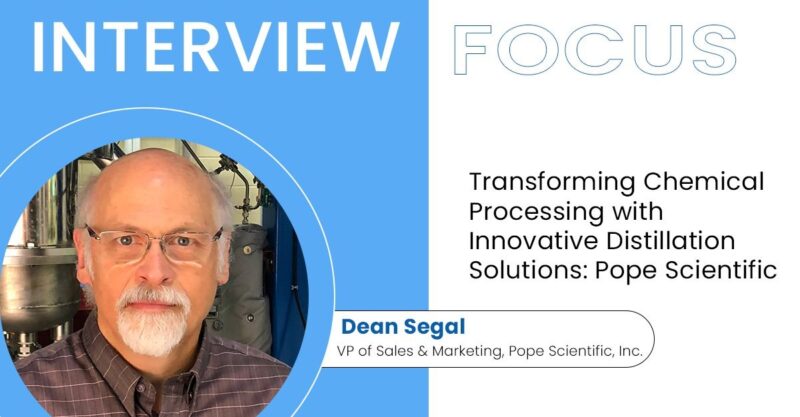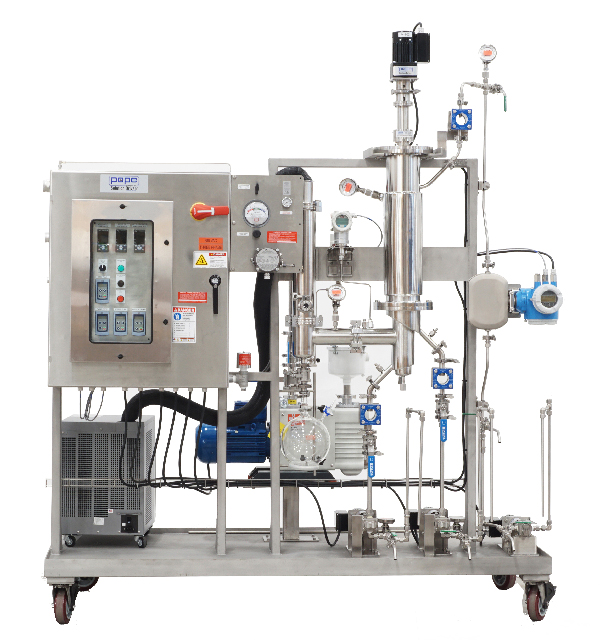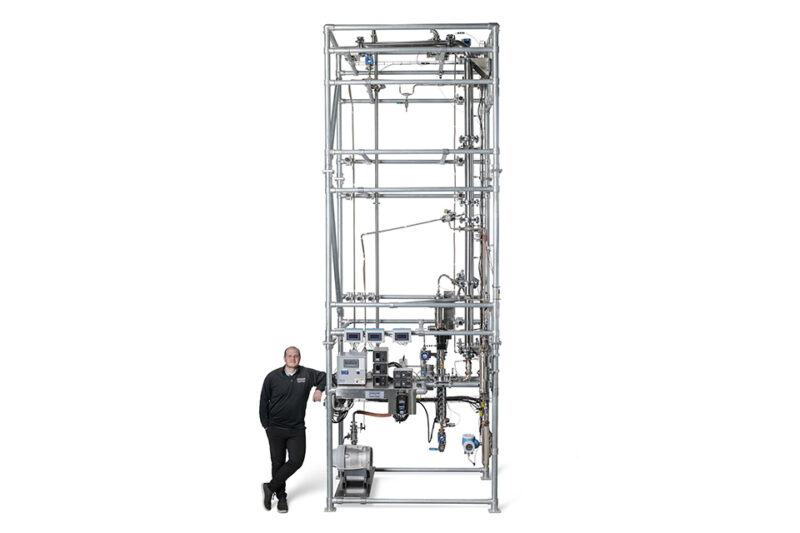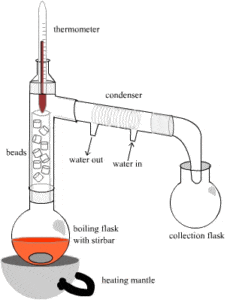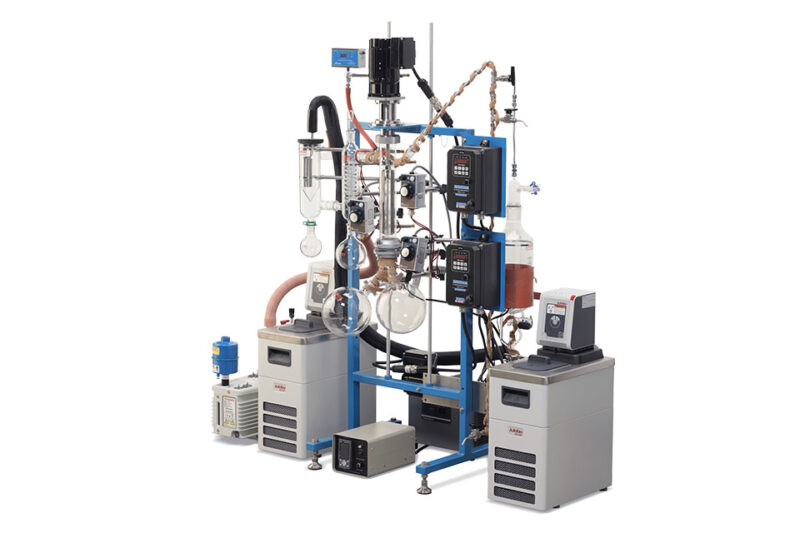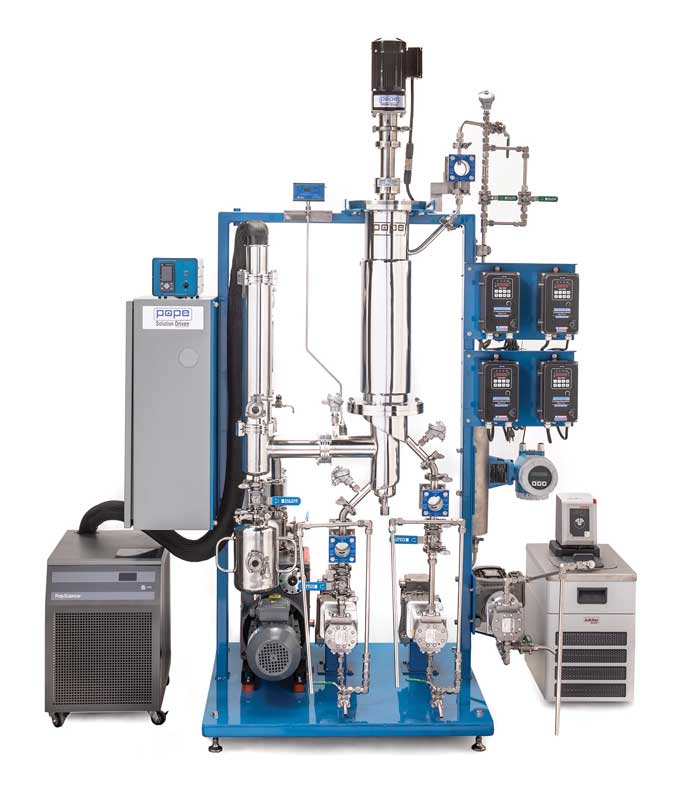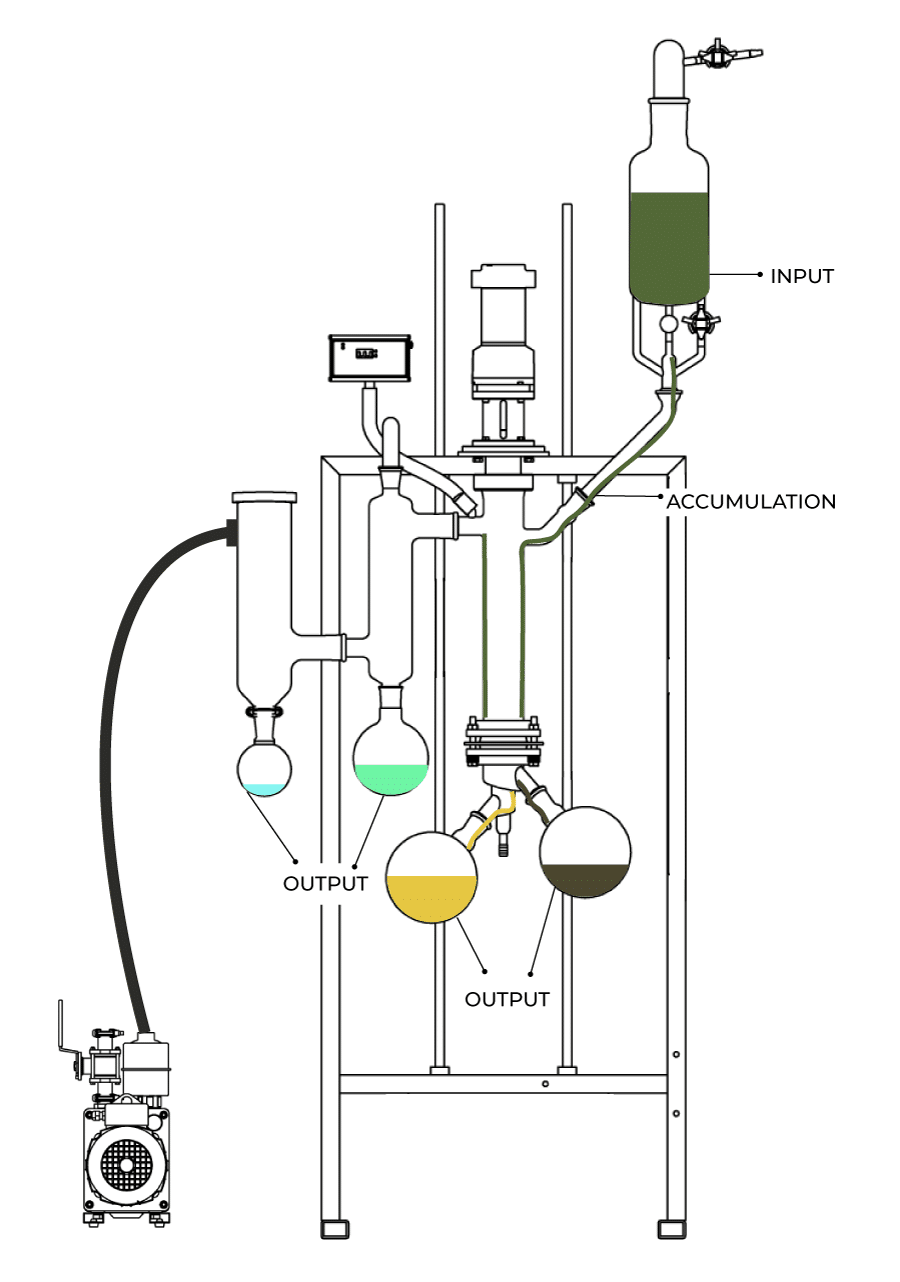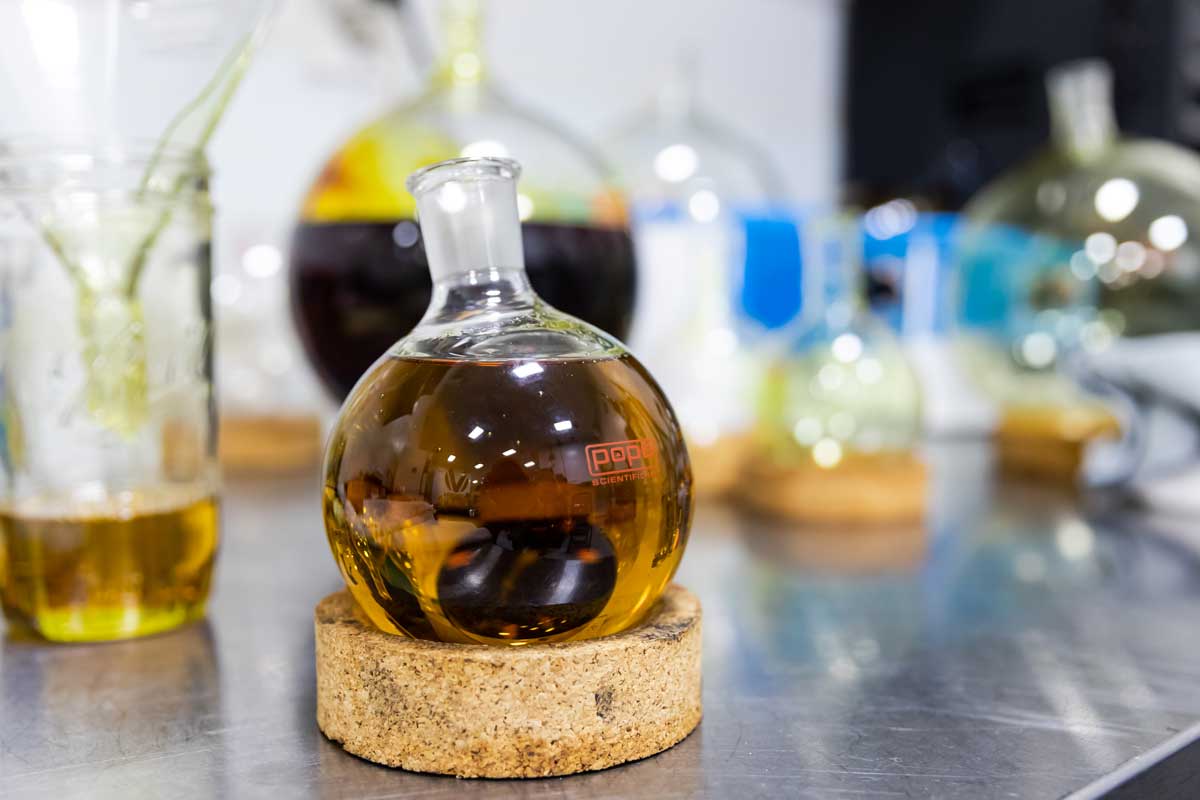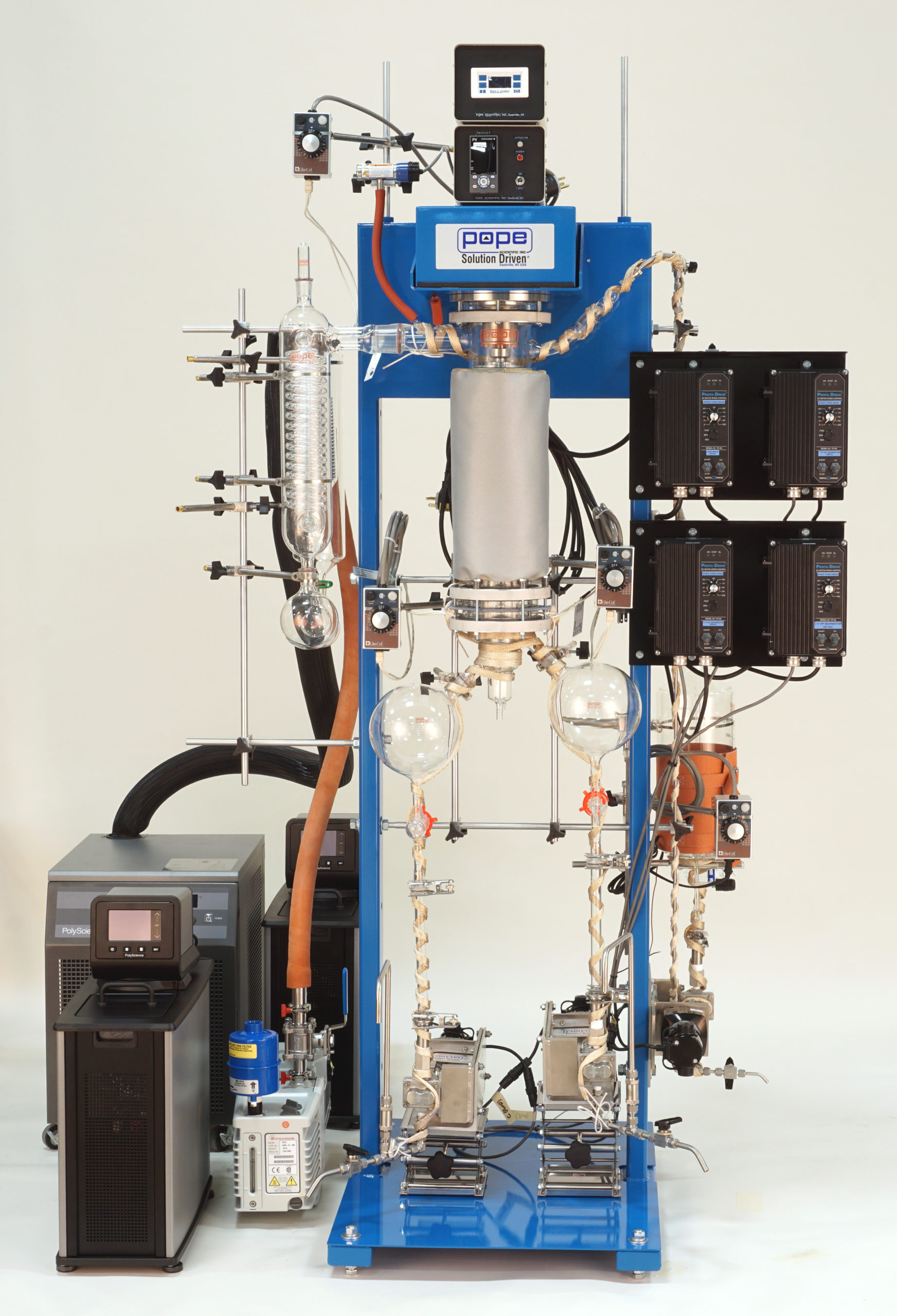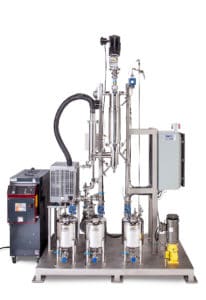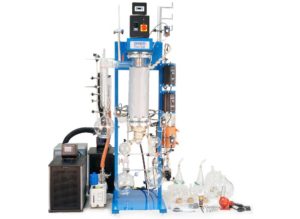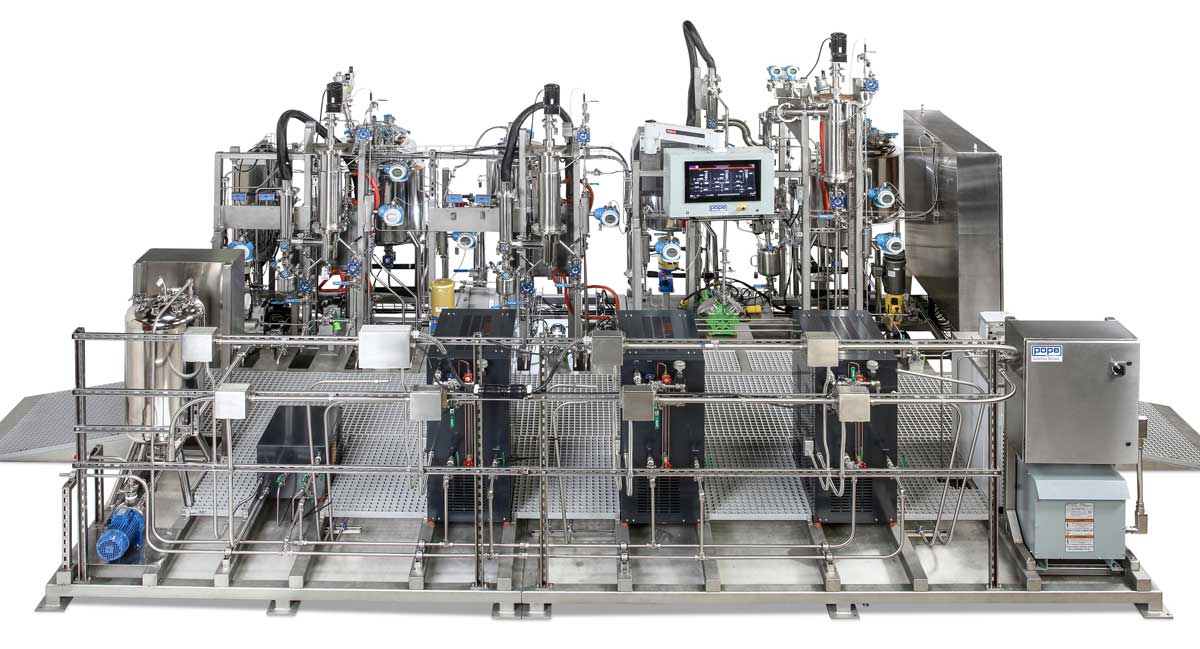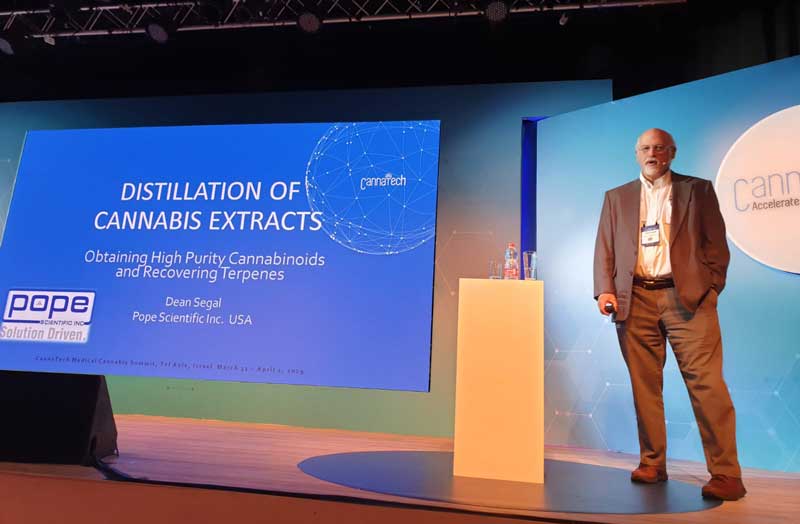Wiped Film Still Stainless Steel Conversion Kits
Pope Scientific offers standard 2”, 4” and 6” Wiped-Film Still systems fabricated with 316L stainless steel in addition to glass. These Wiped-Film Stills not only offer a more robust construction, but also allow you to process at greater feed-rates. Stainless-steel has a greater thermal conductivity coefficient than borosilicate glass. This provides more than double the processing capacity for a still of the same size. In addition, 4” and 6” stainless steel internal condensers have high surface area due to a multiple vertical tube design, allowing yet additional throughput
For customers with existing all-glass stills, Pope’s 316L SS conversion kits, are available. These consist of a stainless-steel body and internal condenser plus all the necessary adapters and clamps to re-attach the existing glass components. Pope recommends that operators be experienced with the Wiped-Film Stills in glass, with their greater process visibility, before switching over to stainless steel.
Pope still systems in all sizes are also available in totally stainless-steel fabrication for continuous, industrial duty. These are typically skid-mounted turnkey systems, and can be of multi-stage, once through design and with optional advanced PLC control. Contact us to discuss your specific application requirements.
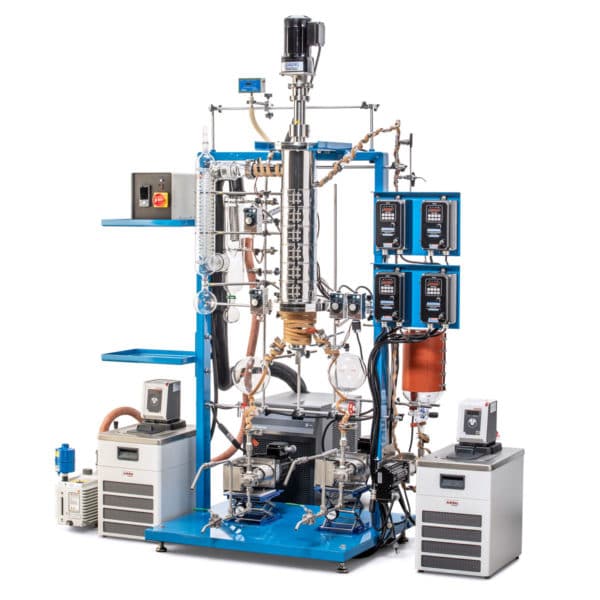
Pope 6″ Wiped-Film Still with Stainless Steel
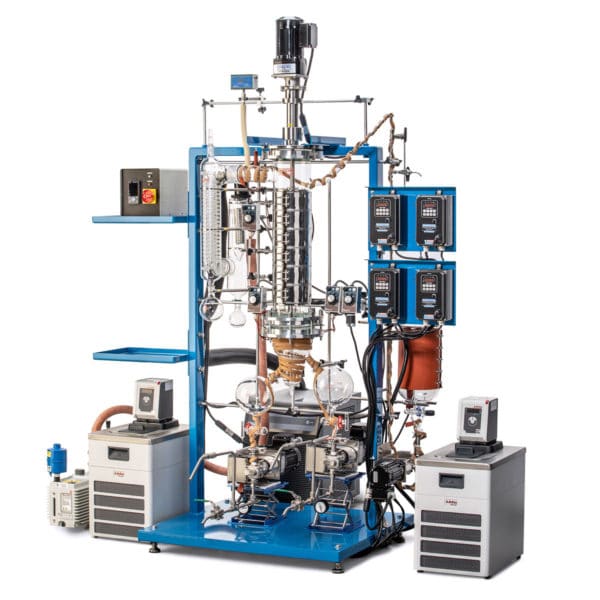
Pope 6″ Wiped-Film Still with Glass

